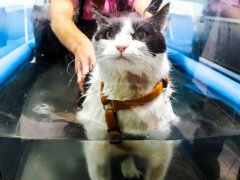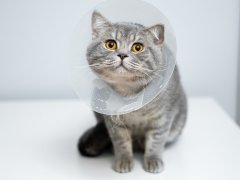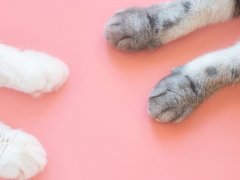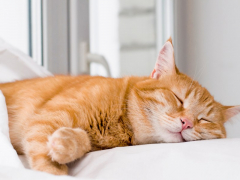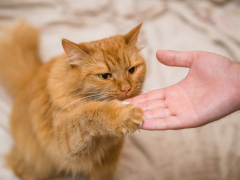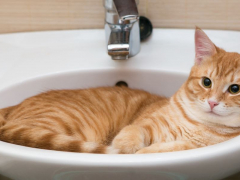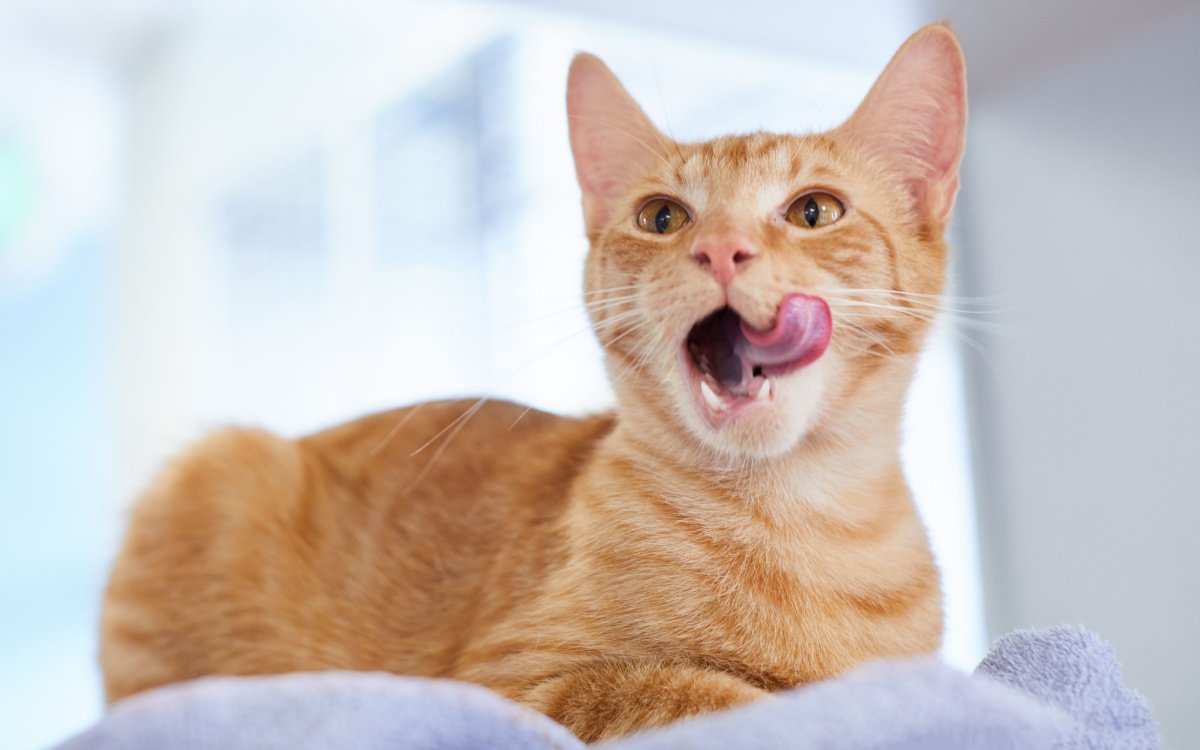
If you have ever been granted a quick groom from your cat, you will have immediately noticed that their tongue feels rough against your skin. If you get really close to your cat when they are yawning or grooming, you may even have noticed the strange bumpy appearance of a cat tongue.
A cat's tongue is covered in backward-facing, hooked barbs that make the tongue feel rough like sandpaper. The barbs on a cat's tongue, called filiform papillae, help cats eat, drink, groom themselves, and regulate body temperature. A barbed tongue helps cats be self-sufficient, something necessary for this often-solitary species.Quick Overview
So why are cats’ tongues so different from other animals like dogs? Well, it turns out that this super useful organ is adapted for all sorts of useful functions for cats, from eating and drinking to grooming. Read on for more!
What Makes a Cat Tongue Rough?
A tongue is a strong muscle with multiple uses. Cats’ tongues are extra special as they are covered in little backward-facing barbs, called filiform papillae. These are shaped like hooks, making the tongue feel rough like sandpaper.
The barbs vary in length, with those in the middle of the tongue being longer. It’s not just our domestic cats who have these sandpapery tongues—larger feline species, including lions, also have these barbs. The papillae are made of keratin, a strong protein found in hair and nails, which makes them hard and tough.
Also Read: 10 Amazing Facts About Your Cat’s Tongue
Why Do Cats Need Rough Tongues?
Animals are often well adapted for their environment, diet, and habits, and cats are no exception. Their rough tongues are useful in a variety of ways to suit their natural habitat and habits.
1. Diet
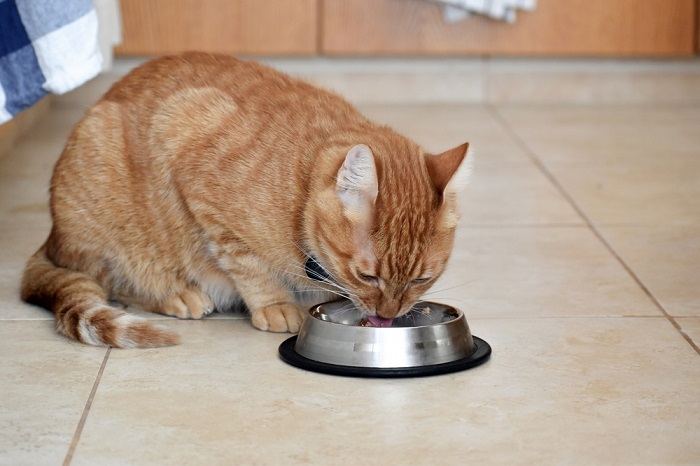
In the wild, barbed tongues help cats strip meat from whole prey.
Cats are obligate carnivores, meaning that they rely on animal protein for their main dietary needs. Due to this propensity to eat meat, a barbed tongue is useful to literally lick the meat from the bones, and also to hold the food in place. Our domestic cats mostly hunt small prey such as voles, mice, and small birds, which they may eat whole, but occasionally larger prey is available.
Large cat species such as lions obviously don’t eat prey whole, and those rough tongues are well adapted to strip meat from bones, leading to efficient consumption of nutrients and no risk of blockages from the non-digestible bones, beaks, wings, and feathers. These handy papillae also play a role in detecting taste and texture.
2. Water
Have you ever watched a cat drink water? They have a very interesting and unique technique! They don’t put their mouth into the water, instead they lap with their tongues very quickly. The tongues itself is shaped like a spoon, and the papillae on the tongue pull water up into the mouth in a continuous stream which your cat can then swallow.
This is a very efficient method of drinking. However, it also means that the cat can remain watchful and alert while drinking, a highly useful skill for a territorial and solitary animal.
3. Grooming
The roughness of your cat’s tongue means that it acts like a natural comb. The hooked barbs pull through the fur as your cat licks itself. The tongue parts the coat, removing tangles, dead hair, and debris or dirt. The hair is left lying flat and in excellent condition.
The filiform papillae also stimulate sebaceous glands in the skin around the base of each hair, allowing natural oils to be spread over the coat to keep it in good condition.
Again, as cats are an often-solitary species, these adaptations of this multi-purpose organ are ideal for their natural environment, where they must rely on themselves alone to groom and care for their coat.
Some cat breeds have been highly bred for their hair, and now have luxurious and thick coats. These are beautiful, but even the well-adapted cat tongue can struggle to penetrate the thick fluffiness.
Cats can end up with a mouthful of fur, which cannot be spat out again due to these backwards facing spines and may cause an intestinal blockage or discomfort. These longer coated breeds need extra brushing from their owners to assist them with grooming.
Also Read: Best Cat Grooming And Deshedding Gloves
4. Heat Control
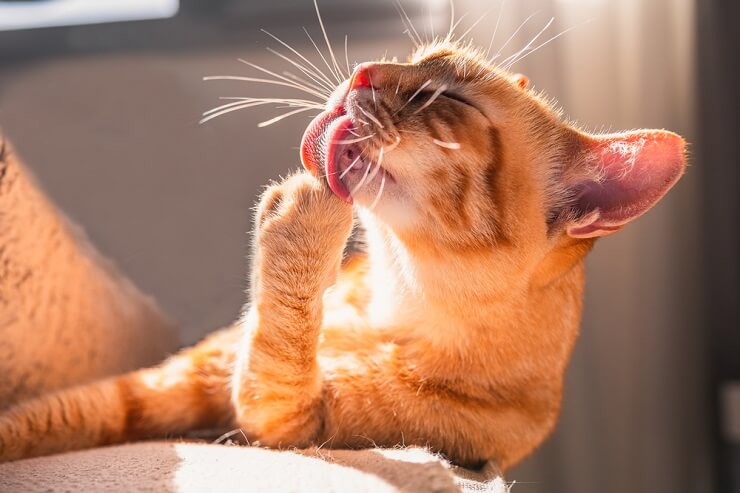
The barbs on a cat’s tongue are hollow and filled with saliva, which wets the skin during grooming, helping to keep the cat cool.
Cats are descended from wild felines living in the African deserts and are well adapted for hot weather. However, with sweat glands only in their paws, they do require some other methods of regulating their body temperature. In hot weather, the hollow spikes can fill with saliva and transfer this over the skin, helping to cool the cat as it evaporates. Clever, right?!
Also Read: Cat In Heat: Signs, Symptoms & Care
In Summary
Cats are intelligent creatures, and are extraordinarily well adapted to their environments in a multitude of ways. It should come as no surprise that even cats’ tongues are clever.
It turns out this multi-purpose is adapted for their specific diet and prey, for drinking water, controlling body temperature and for grooming. All of these functions are highly necessary for cats, and as an often-solitary species they need to be self-sufficient in these matters.
Frequently Asked Questions
Why are cats' tongues so rough and dog's tongues smooth?
Cats' tongues are covered in hook-shaped barbs, called filiform papillae. They make the tongue rough, which is useful for stripping meat from bones and grooming. Dog's tongues don't have these barbs, so their tongues are smooth.
Why do cats have textured tongues?
Cats have rough, sandpaper-like tongues to help with grooming themselves; catching, holding, and eating prey; and cooling down in the heat.
Why are cats' tongues spiky?
Cats have hook-shaped barbs called filiform papillae on their tongues. This makes them feel rough and spiky. The spikes help with holding and eating prey, and with grooming.
Is a cat's tongue supposed to be dry and rough?
Yes, it is perfectly normal for a cat's tongue to feel dry and rough like sandpaper. This is due to the barbs on their tongue, which assist with eating meat and grooming themselves.
 Fact checked by
Fact checked by

